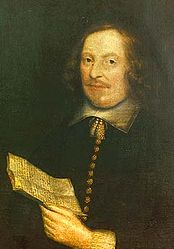 Edward Winslow (1595 – 1655) was a Pilgrim of the Mayflower and a leader of sorts. He served as the governor of Plymouth Colony in 1633, 1636, and finally in 1644. I mention him as in 1624 he published “Good Newes from New England, or a True Relation of Things very Remarkable at the Plantation of Plimouth in New England” which detailed not just the history of the first Pilgrims, but also things concerning the local natives. In particular, Winslow described an experience of his while taking a walk along an Indian trial full of interesting landmarks, though they were much more than that. The Indians he was speaking of were the Pokanokets, and, I think you will find their attempt at preserving their heritage and history of interest, to say the least. Edward Winslow describes what he saw, p. 62:
Edward Winslow (1595 – 1655) was a Pilgrim of the Mayflower and a leader of sorts. He served as the governor of Plymouth Colony in 1633, 1636, and finally in 1644. I mention him as in 1624 he published “Good Newes from New England, or a True Relation of Things very Remarkable at the Plantation of Plimouth in New England” which detailed not just the history of the first Pilgrims, but also things concerning the local natives. In particular, Winslow described an experience of his while taking a walk along an Indian trial full of interesting landmarks, though they were much more than that. The Indians he was speaking of were the Pokanokets, and, I think you will find their attempt at preserving their heritage and history of interest, to say the least. Edward Winslow describes what he saw, p. 62:
Instead of records and chronicles, they take this course, where any remarkable act is done, in memory of it, either in the place, or by some pathway near adjoining, they make a round hole in the ground about a foot deep, and as much over, which when others passing by behold, they inquire the cause and occasion of the same, which being once known, they are careful to acquaint all men, as occasion serveth therewith. And least such holes should be filled, or grown up by any accident, as men pass by they will oft renew the same: by which means many things of great antiquity are fresh in memory. So that as a man travelleth, if he can understand his guide, his journey will be the less tedious, by reason of the many historical discourses will be related unto him.
Using these “Memory Holes” they could share important events (history) with others and more specifically future generations. The Pokanokets seem to have expressed an understanding that preserving their heritage was essential to maintain a cohesiveness and unity. To survive, culturally and intellectually. Something that might be food for thought today, especially for us educators.
-Chris